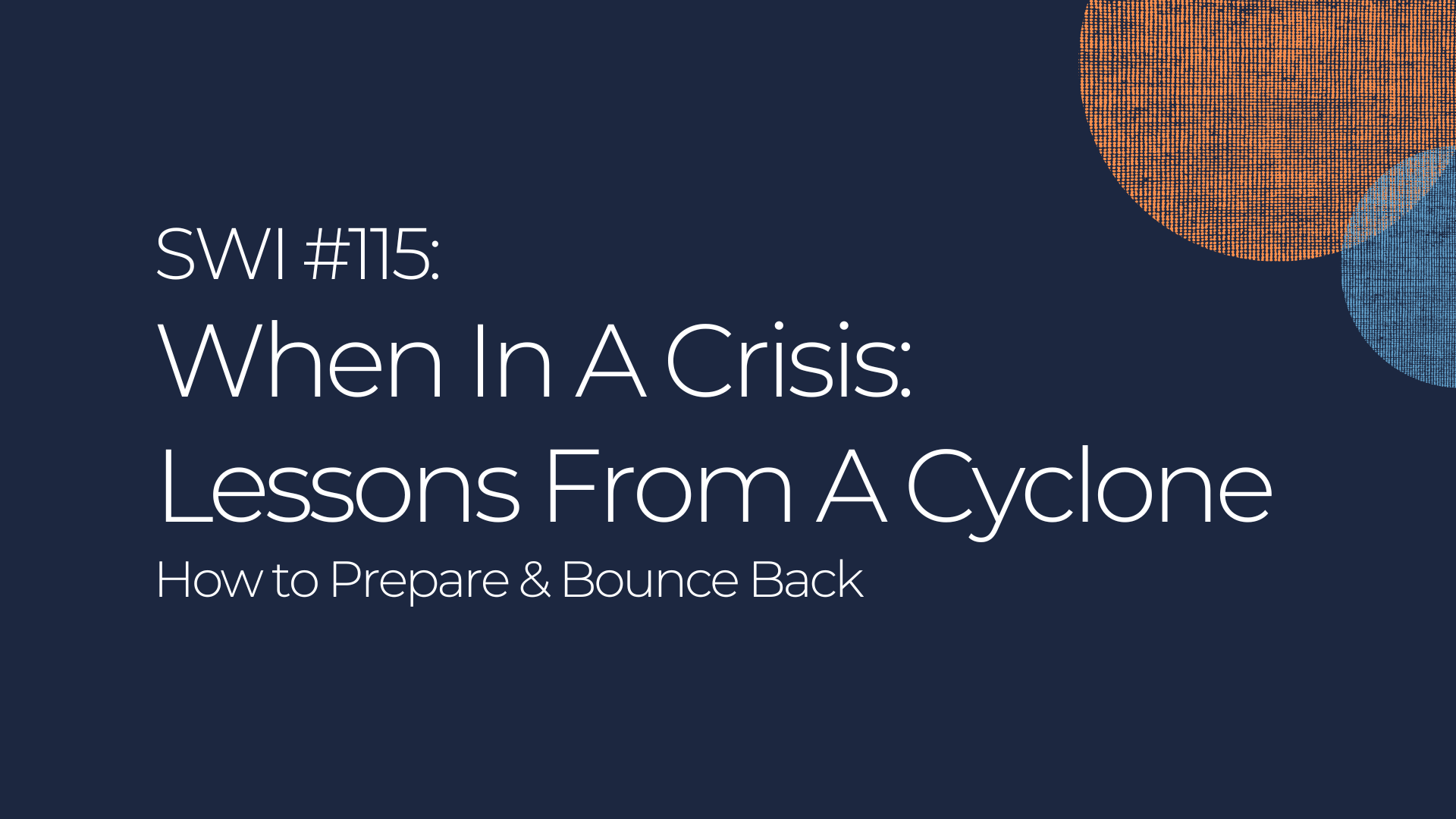Read time: 2 mins
We love our gym.
Seriously.
We go pretty much daily — it’s part of our routine, and we genuinely enjoy it.
It keeps us healthy physically and mentally.
So, when Cyclone Alfred was bearing down on Brisbane last week, we were equally curious and concerned.
After experiencing massive flooding in 2022, we knew the gym was at risk again.
How would they handle it this time?
Would they flood, and if so, how long would they be out for?
Or would they be okay, and bounce back quickly?
Fast-forward a week, and our gym came through and is stronger than ever.
We were super impressed by how they handled the situation — and it got us thinking about how small businesses can prepare for a crisis and bounce back stronger.
So today, we’re sharing lessons from our gym and Cyclone Alfred for you and your business.
PROTECTING YOUR BUSINESS IN A CRISIS (AND BOUNCE BACK STRONGER)
1. Learn From Experience
The gym learned valuable lessons from 2022, when floods hit hard.
They knew what to do and took quick, decisive action when the risk of flooding came up again.
What you can do:
- Identify risks to your business, based on your experience and what’s happened in your industry.
- Create a checklist for handling potential crises and assign roles to your team for each part of the process. Keep this as a reference for future situations.
2. Take Precautions
The gym invested in moving trucks and storage to move its most vulnerable equipment out of the potential flood zone to prevent damage.
This couldn't have been cheap, but it was well worth it.
The cost of replacement would have been in the hundreds of thousands and would have taken weeks to replace.
What you can do:
- Ensure your budget contains money you can use when you need to take quick action to protect your business.
- Assess your most valuable assets and take action to protect them, whether it’s physical equipment, customer data, or intellectual property.
- Invest in backup and redundancy measures—whether it’s backup equipment, insurance, a generator, etc.
3. Communicate Regularly With Your Clients
As the storm approached, the gym kept us and their members updated via text and email.
They communicated when the club would close and what steps they were taking to prepare.
Throughout the storm, they shared updates on when to expect re-opening.
They even sent a text advising they’d be able to pull forward their re-opening, which made gym rats like us equally cheer and breathe a sigh of relief on their behalf -
Our beloved gym is totally okay - and they did a great job letting us know.
What you can do:
- Keep your clients and customers informed before, during, and after a crisis.
- Use multiple channels—email, social media, text—so no one misses an update.
Bottom Line:
The gym’s quick action and preparation made all the difference.
They learned from experience, took the necessary precautions, and communicated well with their customers.
Ultimately, they’ve come through stronger, and we’re confident they’ll continue to thrive.
Your business can do the same—prepare, act, and communicate—and you’ll be able to handle any crisis that comes your way.
Speak soon,
Lynne & Steve
TLDR:
- In a crisis, it’s essential to protect your business and bounce back quickly. Here's how:
- Learn from experience and create a crisis checklist for your business.
- Take proactive steps to safeguard your assets (and make sure you have funds budgeted to do so).
- Communicate regularly with your clients to keep them informed and reduce uncertainty.
- By preparing, protecting, and staying communicative, you’ll be ready for anything that comes your way.
Need help building a crisis plan for your business? Let’s chat!
|


.png)